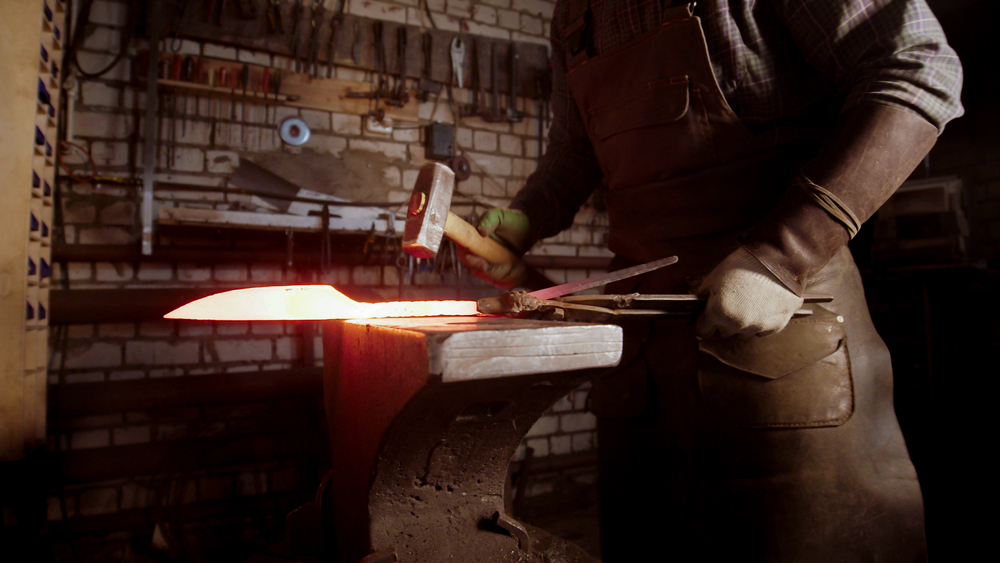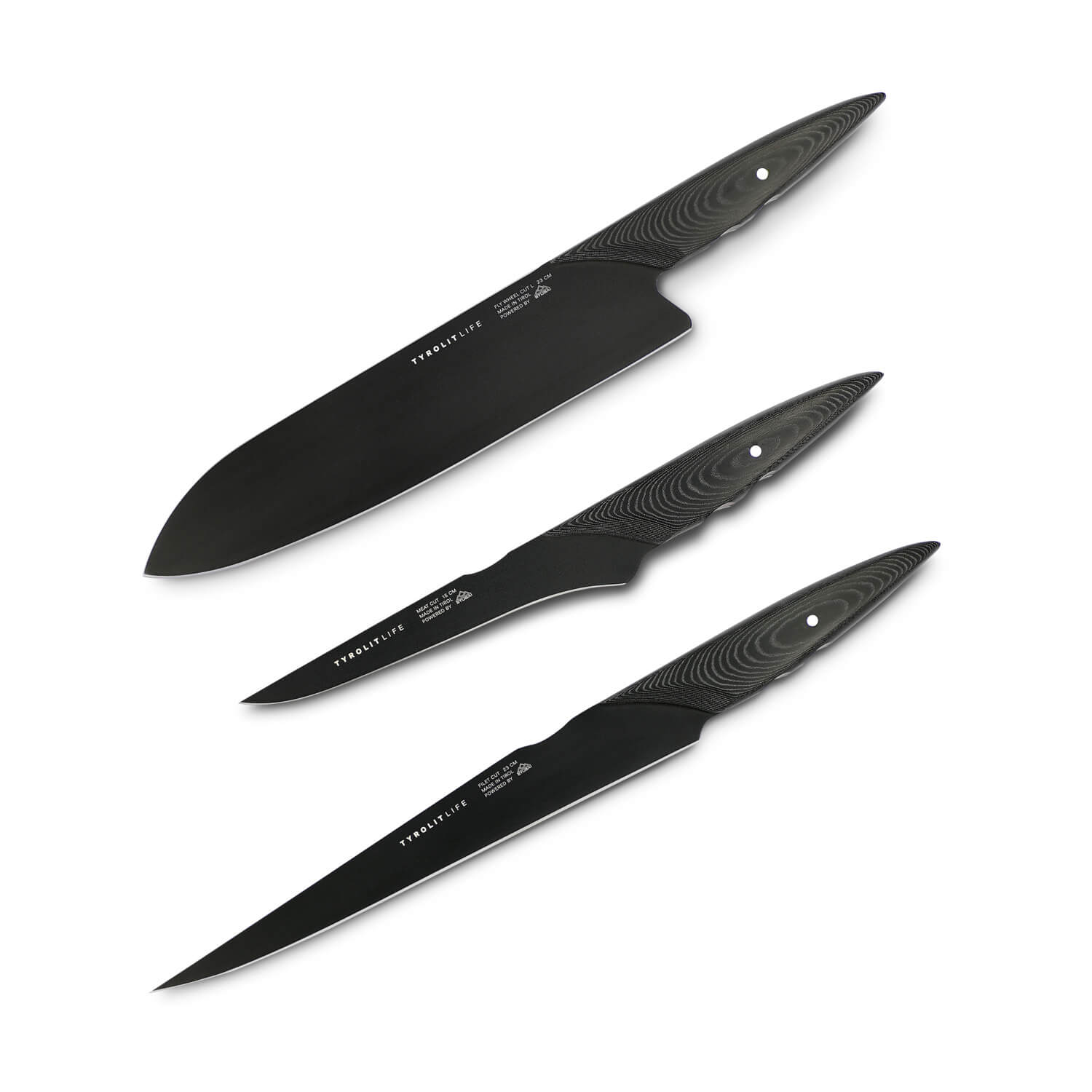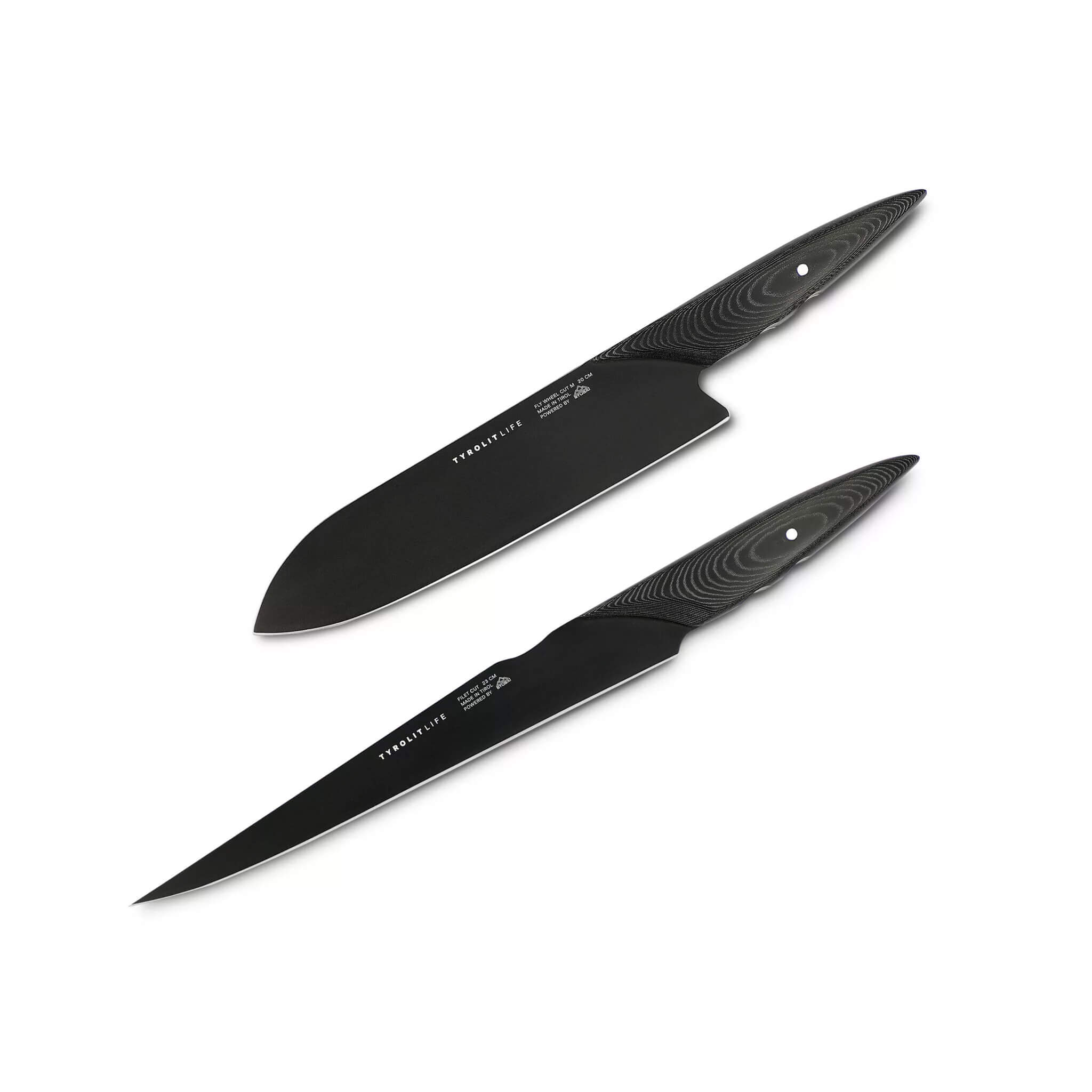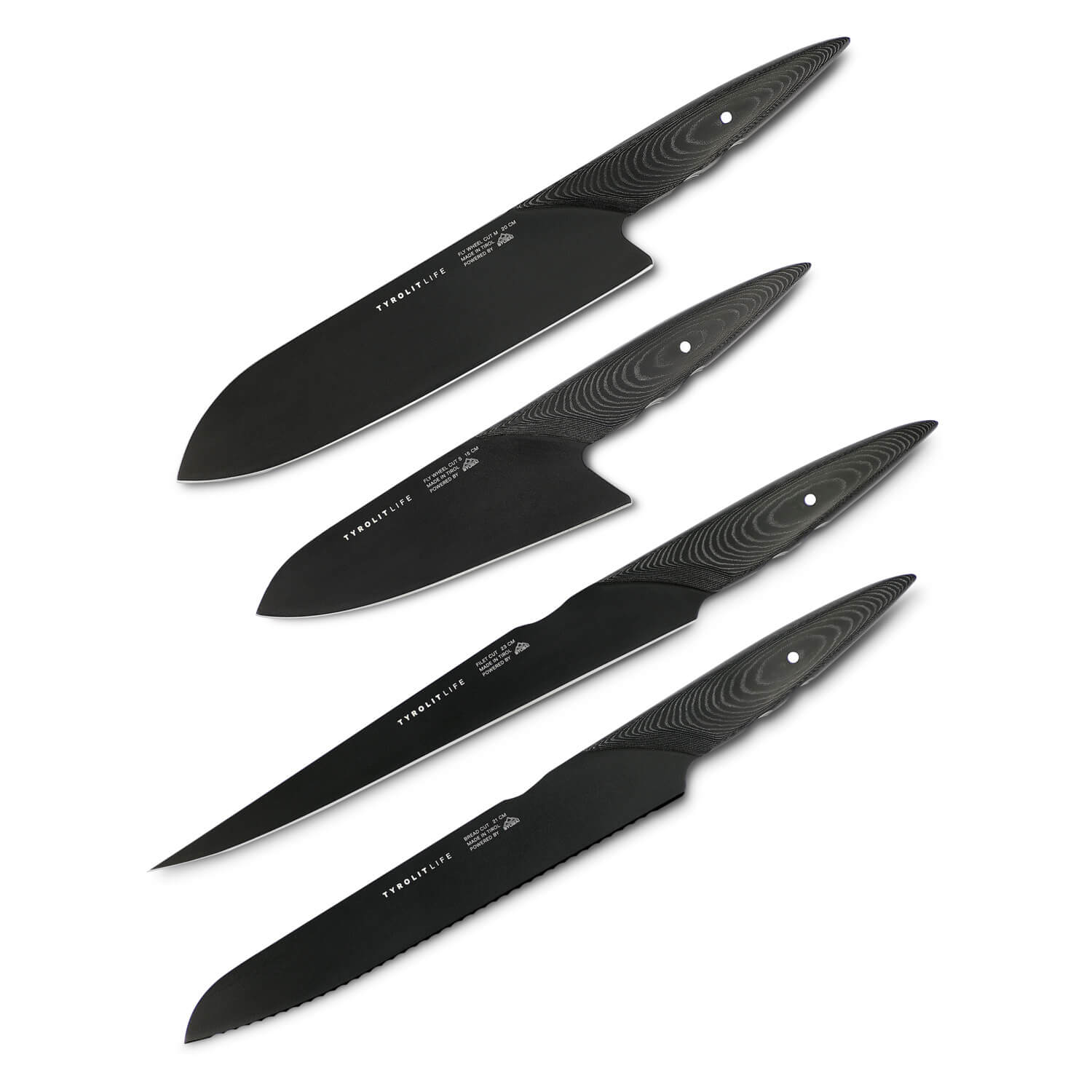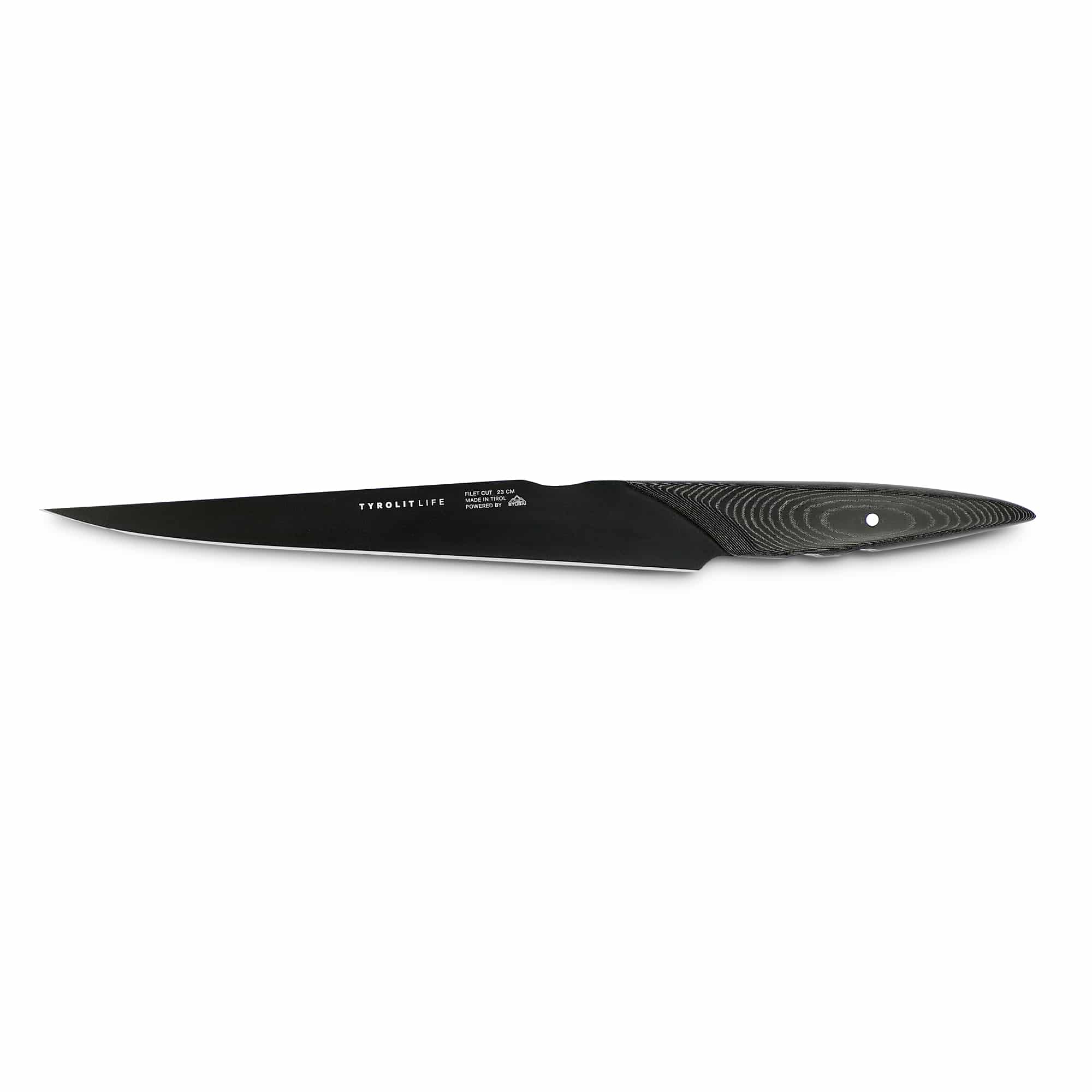What is a filleting knife and what is it used for?
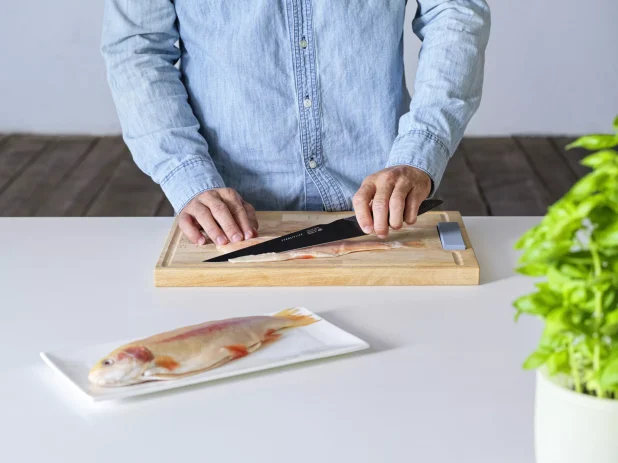
A fillet knife, also known as a filleting knife, is an essential tool in many kitchens, both for amateur cooks and professionals. This special kitchen knife is designed to simplify the filleting of fish and meat and enables precise cuts for separating meat from bones or fish bones
Its slim and flexible blade distinguishes it from other meat knives or kitchen knives and makes it ideal for its specific tasks. In this article, you will learn everything about the definition, history, areas of application, construction and maintenance of a filleting knife.
How is a filleting knife defined?
A filleting knife is different from traditional kitchen knives. It is narrower and more flexible: this allows it to better adapt to the shape of the fish or piece of meat. This reduces the risk of waste or damage to the meat.
In addition, the tip of the filleting knife is often sharp and pointed to facilitate the initial cut, while the rest of the blade is designed to slide through meat and close to bone and skin.
The art of filleting requires skill and practice and the filleting knife is the preferred instrument to do justice to this craft. True masters of using this knife can cut a fish into flawless fillets without wasting valuable meat.
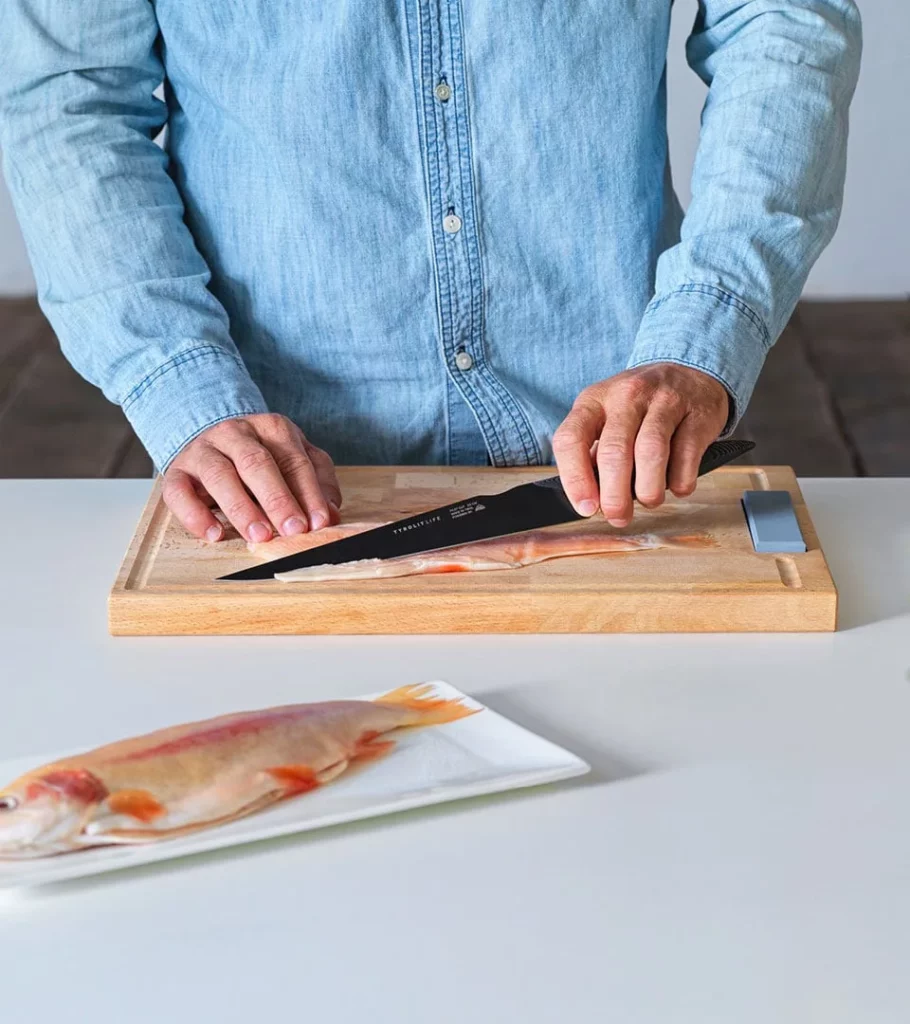
The History of the Filleting Knife
The history of the knife, in this case the filleting knife, spans far back in time and is noteworthy. The Egyptians and Romans already utilized specialized tools for cutting and processing meat and fish. However, the true evolution of the filleting knife, as we know it today, likely started in coastal regions where fish was a staple in the diet.
In the Middle Ages, the techniques for preparing fish were refined, and it became customary to serve it without bones and spines. This led to the development of special knives with high flexibility and sharpness for precise filleting of the fish.
In Japan, the land of sushi and sashimi, the filleting knife in the form of the “Yanagiba” was perfected. These knives, often handmade by masters of their craft, are specially designed for cutting raw fish.
With industrialization and mass production in the 19th and 20th centuries, filleting knives became accessible and affordable worldwide. Their construction and materials have since evolved to meet the needs of professional and amateur chefs.
Today, the filleting knife is a symbol of the fine art of preparation – a tool that is highly appreciated in professional gastronomy as well as by amateur chefs and recreational fishermen.
The History of the Knife – Weapon, Tool and Precision Instrument
Human history is closely linked to that of the knife. In this post, we look at important milestones – from the origins, to the materials used, to today’s precision tools.
Differences from other knife types – the flexible blade
While each knife in a kitchen has its unique role and function, the filleting knife stands out for its specific design and areas of application.
Take, for example, the chef’s knife: with its wide and heavy blade, it is the all-rounder tool in the kitchen, ideal for chopping, cutting and dicing a variety of ingredients, including meat.
The meat knife category differs again in specific kitchen knives designed precisely for their tasks.
Another specialized kitchen knife is the boning knife. With its short and often curved blade, it is perfect for loosening meat from bones, be it poultry, lamb or beef.
In contrast, the filleting knife is characterized by its particularly slim and flexible blade, which makes it possible to make precise cuts along the bones and skin of fish. While cooking, meat and boning knives have their strengths in various areas of meat processing, the filleting knife is second to none when it comes to turning fish into flawless fillets.
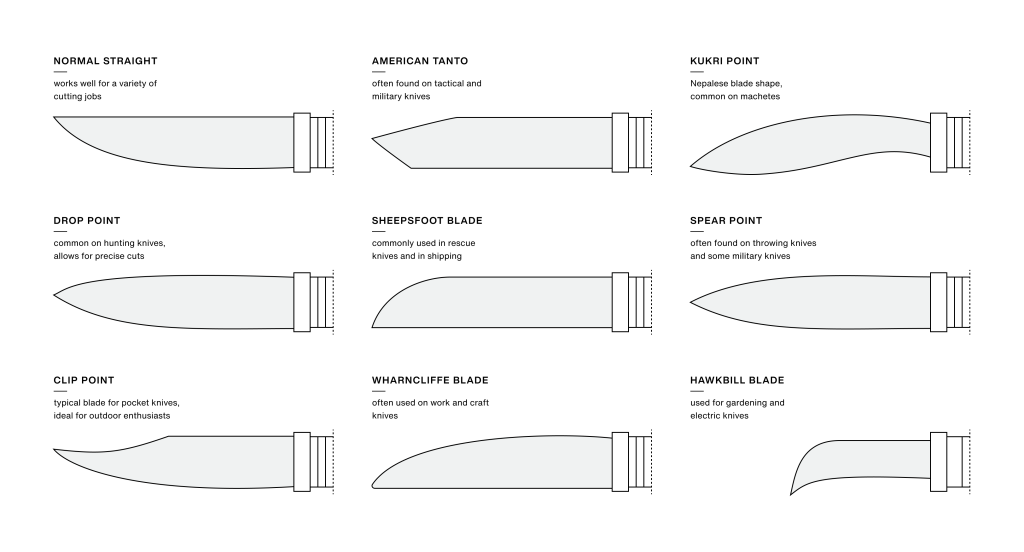
Construction and Materials of a Fillet Knife
In the following paragraphs you will find information on the structure and materials of the filleting knife.
Structure and blade material
Let’s start with the most important part of the knife: the blade. The blade length of a typical filleting knife can vary, with the overall length often depending on the specific application and user preferences.
A special feature of many filleting knives is their flexible blade, which makes it possible to achieve precise cuts and fit snugly to the contours of the meat or fish. When choosing materials, quality and functionality are paramount.
Stainless steel is a frequently used material due to its resistance to corrosion and durability. Damascus steel, known for its layered patterns, is also commonly employed.
Another important indicator of the hardness and quality of a blade is the HRC (Rockwell hardness), which indicates the blade’s potential for edge retention and sharpness.

Texture of the handle and handle material
With the filleting knife, not only the sharpness and flexibility of the blade play a role, but also the handle, which is crucial for handling. Depending on the material of the handle, there are various characteristics and advantages.
Knives with stainless steel handles are valued for their hygienic attributes and seamless construction, making them exceptionally stable. However, one potential downside could be their grip, which may become challenging when hands are wet.
Common types of wood for knife handles are oak, walnut wood, beech and pakka wood. They not only give the knife an aesthetic and elegant look, but also offer a natural grip. However, it is essential that these wooden handles are sealed to ensure their longevity and avoid problems such as cracking or mould formation.
For plastic handle variations, there are distinct manufacturing techniques. Either two plastic halves are affixed to the sides of the handle and riveted together, or the plastic is directly injected onto the tang of the knife and then cured. It’s crucial to achieve meticulous craftsmanship to ensure a lasting connection between plastic and metal. A significant advantage of plastic handles is their durability, slip-resistant property, and ease of cleaning, making them notably hygienic.
The handle scales of the Tyrolit Life filleting knife are crafted from Micarta – a durable composite material – and are three-dimensionally milled on a multi-axis CNC machine. Their ergonomic shape is achieved through meticulous sanding and polishing by hand, before being airtight pressed against the steel and permanently bonded.
Uses of the Filleting Knife
Whether preparing a fine fish dish or presenting a juicy piece of meat: a filleting knife proves its versatility and precision in many kitchen moments.
Whether professional or amateur chef, with its long, flexible blade, the filleting knife can be effortlessly guided along the bones to obtain clean fish fillets. The filleting knife is not only a useful companion for small fish such as trout, but also shows its strengths, especially when cutting up large fish.
Furthermore, the filleting knife makes it possible to produce thin slices of meat, which is particularly important when preparing carpaccio or tartar.
The fish filleting knife
While some people may only know a simple filleting knife, there are actually different specialized types that are tailored to different fish and applications.
A classic filleting knife is ideal for the precise cutting of meat and bone, characterized by its slender and flexible blade.
The fish knife, on the other hand, often referred to as a fish filleting knife, has been specifically designed for cleanly filleting fish, allowing for the elegant fillets to be removed in a single smooth cut
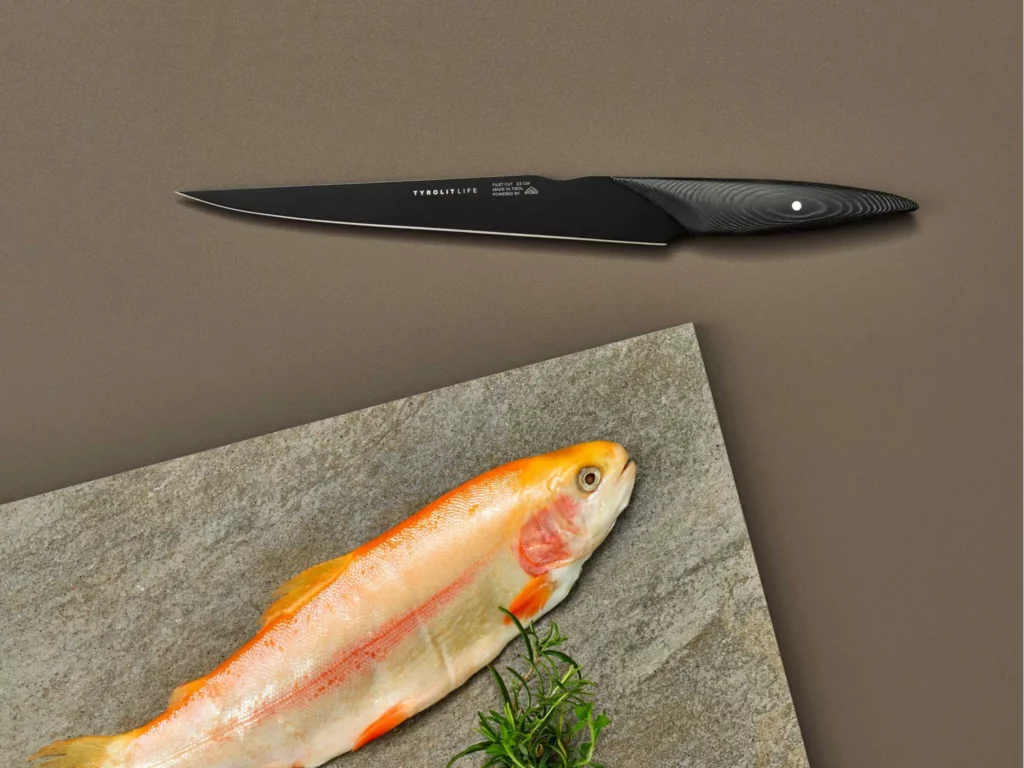
For anglers who want to work their catch directly on the water, the filleting knife is available as a fishing knife. It is often more robust to meet the demands of outdoor use.
Not to be forgotten is the Yanagiba – a traditional Japanese filleting knife that is appreciated not only for its sharpness and precision, but also for its aesthetically pleasing shape.
Anglers also appreciate a high-quality filleting knife. It allows them to turn their catch into appetizing pieces and bring it fresh from the water directly to the plate.
Filleting Knife – Flexible Blade Techniques
What is the best way to use the filleting knife? Here are some techniques that make the difference thanks to the flexible blade:
If you want the perfect fillet, it's best to start at the tail end of a fish fillet. Here you can cleverly place the knife between skin and meat and pull it along the skin. Thanks to the remarkable flexibility of the filleting knife and the long blade, it can be guided wonderfully close to the skin, preserving valuable meat.
But not only does skin removal become a breeze, removing bones is another area where the filleting knife shines with the correct technique. Thanks to the fine tip of the knife, you can easily get underneath the bones and lift them out without damaging the surrounding meat.
But the filleting knife can do even more: If you want to cut very thin slices of meat or fish, its sharp blade is just the thing. Such precision cuts are ideal for dishes such as carpaccio or sashimi where you want to work wafer-thin.
The filleting knife is also indispensable when filleting larger fish, such as a stately salmon or a tuna. Here, you guide the knife along the back of the fish, starting at the head and ending at the tail.
And when it comes to gutting fish, the filleting knife is also on hand. A clean cut from the tail end to the head, and the offal can be removed easily and without damaging the meat.
Filleting Knife Care – A Guide to Kitchen Practice
In the following section you will find some important tips on how to keep your filleting knife in top shape and ensure that it will be a long-standing companion in your kitchen.
Cleaning
After every use, it's vital to carefully clean the knife. So, always remember: maintain and clean your knives! Despite many modern knives being labeled as rust-resistant, it's still highly recommended to wash them by hand and dry them off immediately to prevent rust formation. Using a dishwasher might seem convenient, however, aggressive cleaning agents and collisions with other items can damage the blade. Additionally, wooden handles are at risk of damage from the machine's heat and moisture. Therefore, it's wise to always hand wash filleting knives and keep them in a secure, dry place. More on this will follow in the next section.
Storage and security
A filleting knife can be a real treasure in the kitchen. But as with any treasure, the right storage determines its value preservation.
How and where should you best store your fillet knife? A trusted solution in nearly every kitchen is the knife block. The advantage? It protects the blades and keeps them sharp for longer. Moreover, knife blocks, available in various designs and materials, can also serve as an aesthetic highlight in your kitchen.
Knife block for filleting knives from Tyrolit Life
Tyrolit Life offers a particularly innovative solution here. With the knife block plus in black or silver, the manufacturer has created a magnetic knife block that not only impresses visually, but also scores with an integrated sharpening system. Two important aspects of knife care can be covered here. Care and safety! Handmade in Tyrol, this premium product makes a clear statement in terms of functionality and design.
Sharpen the filleting knife properly

The quality of a filleting knife manifests itself especially in the sharp blade: Maintaining this sharpness requires regular care through proper sharpening. The sharpening of the knife is crucial here. A blunt knife can lead to inaccurate cuts and even increase the risk of injury.
To maintain the sharpness of the knife, you can choose between different tools. The sharpening stone is a traditional method that enables high precision by manually sharpening the blade. The knife should be pulled over the stone at a constant angle to ensure uniform sharpness over the entire length of the blade.
The honing steel is another tool, particularly used for re-sharpening between intensive usage sessions. With just a few strokes, the knife's original sharpness can be restored.
Tyrolit Life is a company that specializes in the sharpening and honing of knives, offering high-quality solutions that are aesthetically pleasing as well – such as the compact knife sharpener, which is notably space-saving. The double-sided whetstone features two distinct grits
On the other hand, there is the MK2 acrylic knife sharpener in an elegant acrylic design. The preset sharpening angle of 15 degrees allows uncomplicated and safe handling. This knife sharpener is also available in a wooden version.
How do I find a high-quality filleting knife?
When purchasing a filleting knife, two central questions commonly arise: What do you need to invest, and what should you look out for?
Price considerations are often the first clue. The price range for a good filleting knife can be considerable, depending on the brand, material and workmanship. A good filleting knife may be an investment, but it will usually impress with its longevity, cutting precision and handling.
But apart from the price, there are other criteria that should be taken into account when buying a filleting knife.
Blade sharpness is crucial, as is the flexibility of the blade, which makes it possible to make fine cuts along the fish. The material from which the knife is made can also affect its durability and rust resistance. Another factor is the handle of the knife. It should be comfortable in the hand, have a handle length that fits your hand and be non-slip to avoid accidents in the kitchen.
In short, buying a filleting knife is not just about finding the cheapest deal. Rather, you should pay attention to a combination of quality, functionality and value for money.
At Tyrolit Life, for example, you can buy a high-quality filleting knife. The knife convinces with its unique sharpness, its patented Micarta handle and ideal degree of flexibility due to its length and geometry.
Filleting Knife FAQs
Which knife is best for filleting meat?
Which knife do experts recommend for the proper evisceration of fish?
How do I sharpen a filleting knife?
What is a paring knife and what is it used for
What is the difference between a kitchen knife and a fillet knife?

